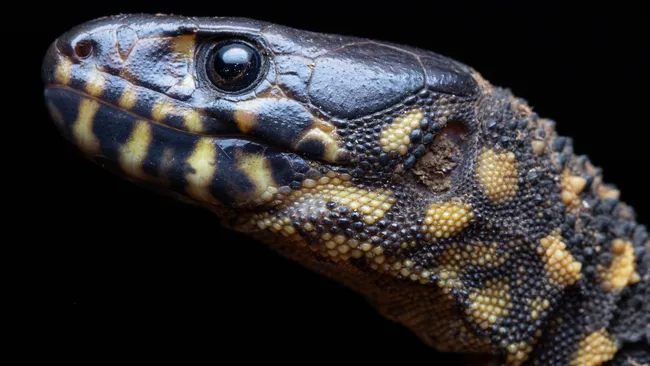Researchers found that night lizards survived the dinosaur-killing asteroid strike at the end of the Cretaceous, despite living near the impact site in Mexico.
The Lizards That Saw the World End — and Lived to Tell the Tale
66 million years ago, a massive asteroid slammed into what is now Mexico’s Yucatán Peninsula, wiping out the dinosaurs and ending the Cretaceous era in a fiery apocalypse. But while giants like T. rex and Triceratops vanished from the Earth, one tiny, secretive survivor held its ground — the night lizard.
Now, scientists have discovered something astonishing: these elusive reptiles weren’t just survivors of the mass extinction. They were living right next to the blast zone — and somehow made it through.
In a new study published in Biology Letters, researchers revealed that night lizards (family Xantusiidae) were scurrying around the Gulf of Mexico before and after the asteroid hit. That makes them the only known group of land vertebrates to survive the K-Pg extinction event so close to ground zero — and still be living in the same region today.
“They would have been all around the margin of the asteroid impact,” said lead author Chase Brownstein, a doctoral candidate at Yale. “And they’re still there.”
These tiny lizards — only a few inches long — live hidden inside crevices, under bark, and within dense vegetation. They’re incredibly shy and often overlooked. But their survival story may be one of the most dramatic in natural history.
How did they do it?
Scientists can’t say for sure. But the leading theory is that their slow metabolisms allowed them to go without food for long stretches, helping them wait out the worst of the post-impact chaos. Their reclusive lifestyles and preference for sheltered microhabitats may have offered them some protection from the global firestorms, plummeting temperatures, and toxic skies that followed the impact.
Using genetic analysis and evolutionary “molecular clock” techniques, Brownstein and his team traced the origins of the three known night lizard genera — Xantusia, Lepidophyma, and Cricosaura — and found their common ancestor dates back around 90 million years. That means night lizards were already around for at least 24 million years before the asteroid struck — and endured one of Earth’s deadliest days.
Since then, they’ve evolved into two main lineages: one that includes Xantusia and Lepidophyma (found across the southwestern U.S., Mexico, and Central America), and another that gave rise to Cuba’s rare Cricosaura typica — the only member of its genus.
While other animals like mammals, birds, and some fish also survived the mass extinction, night lizards are special. They’re the only terrestrial vertebrates known to survive the impact in the region and still live there today.
“Other reptiles might’ve made it through too,” Brownstein explained, “but they didn’t last. These lizards did.”
More than survivors, xantusiid night lizards are living fossils — quiet witnesses to the fall of the dinosaurs and the rise of the mammals, still thriving in the shadows of the same lands that shook when the asteroid fell.
In a world that often rewards the biggest and boldest, the night lizards remind us: sometimes, it’s the small, quiet ones who outlast us all.
